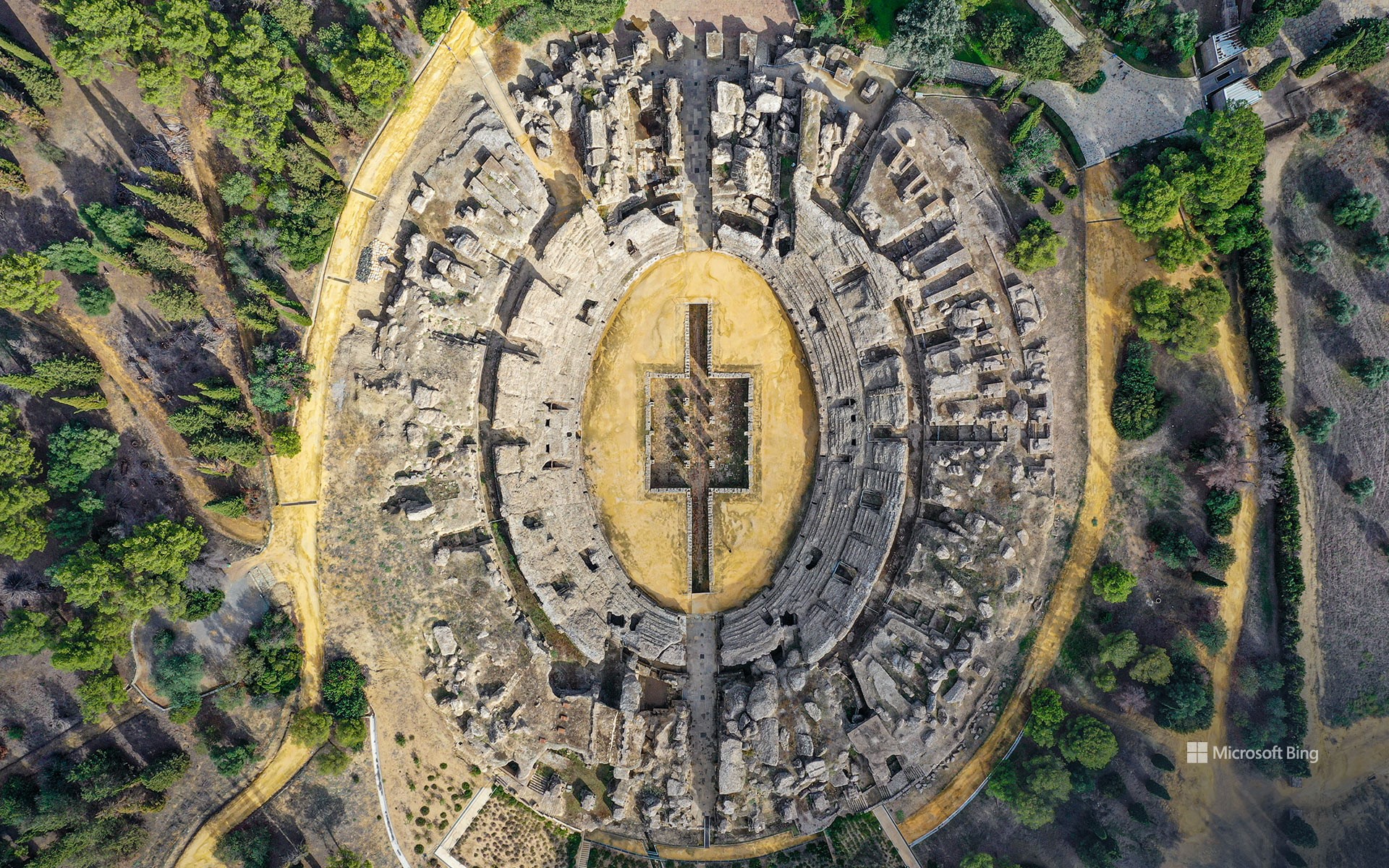意大利卡,桑蒂蓬塞的一座古罗马城市,塞维利亚,安达卢西亚,西班牙 Italica, an old Roman city in Santiponce, Sevilla, Andalusia, Spain (© Moses Palermo/Amazing Aerial Agency)

意大利卡,桑蒂蓬塞的一座古罗马城市,塞维利亚,安达卢西亚,西班牙 Italica, an old Roman city in Santiponce, Sevilla, Andalusia, Spain (© Moses Palermo/Amazing Aerial Agency)
昔日城市的“灵魂” Ghosts of cities past
意大利卡,桑蒂蓬塞的一座古罗马城市
公元前206年,在伊利帕战役之后,罗马将军兼政治家普布利乌斯·科尼利乌斯·西庇阿为帮助打败迦太基人的罗马老兵建造了一个定居点。该城位于瓜达尔基维尔河右岸,因居民来自意大利而被命名为“意大利卡”。这座城市是罗马人在伊比利亚半岛建立的第一个定居点,在该地区的罗马化进程中发挥了重要作用,该地区当时被称为伊斯帕尼亚,即今天的西班牙。意大利卡在建城后的几个世纪里蓬勃发展,尤其是在图拉真皇帝和哈德良皇帝统治时期。
意大利卡古城,曾经是繁华的城市中心,其最具标志性的特征就是今天图片中的圆形剧场。它是罗马帝国最大的圆形剧场之一,可容纳25000名观众,是当时罗马城人口的两倍多。除此之外,这里还有令人印象深刻的公共建筑遗迹、为纪念图拉真而建的神庙、浴场以及用精美马赛克装饰的别墅。意大利卡古城是保存完好的考古瑰宝,让人得以一窥罗马帝国的辉煌。
The ruins of Italica, Andalusia, Spain
It was the year 206 BCE. In the wake of the decisive Roman victory against the Carthaginians at the Battle of Ilipa, General Publius Cornelius Scipio built a settlement for veterans on the banks of the Guadalquivir River, in modern-day Spain. It was named Italica and was the first Roman settlement on the Iberian Peninsula. The city flourished in the following centuries and was the birthplace of two Roman emperors, Trajan and Hadrian.
The ruins of Italica, close to Seville, include the impressive amphitheater seen in today's image. One of the largest in the Roman Empire, it could accommodate up to 25,000 spectators, more than double the city's population. Beyond this, there are remains of public buildings, a temple built in honor of Trajan, baths, and villas decorated with stunning mosaics. Italica is an archeological gem, offering a glimpse into the grandeur of the Roman Empire.
评论已关闭